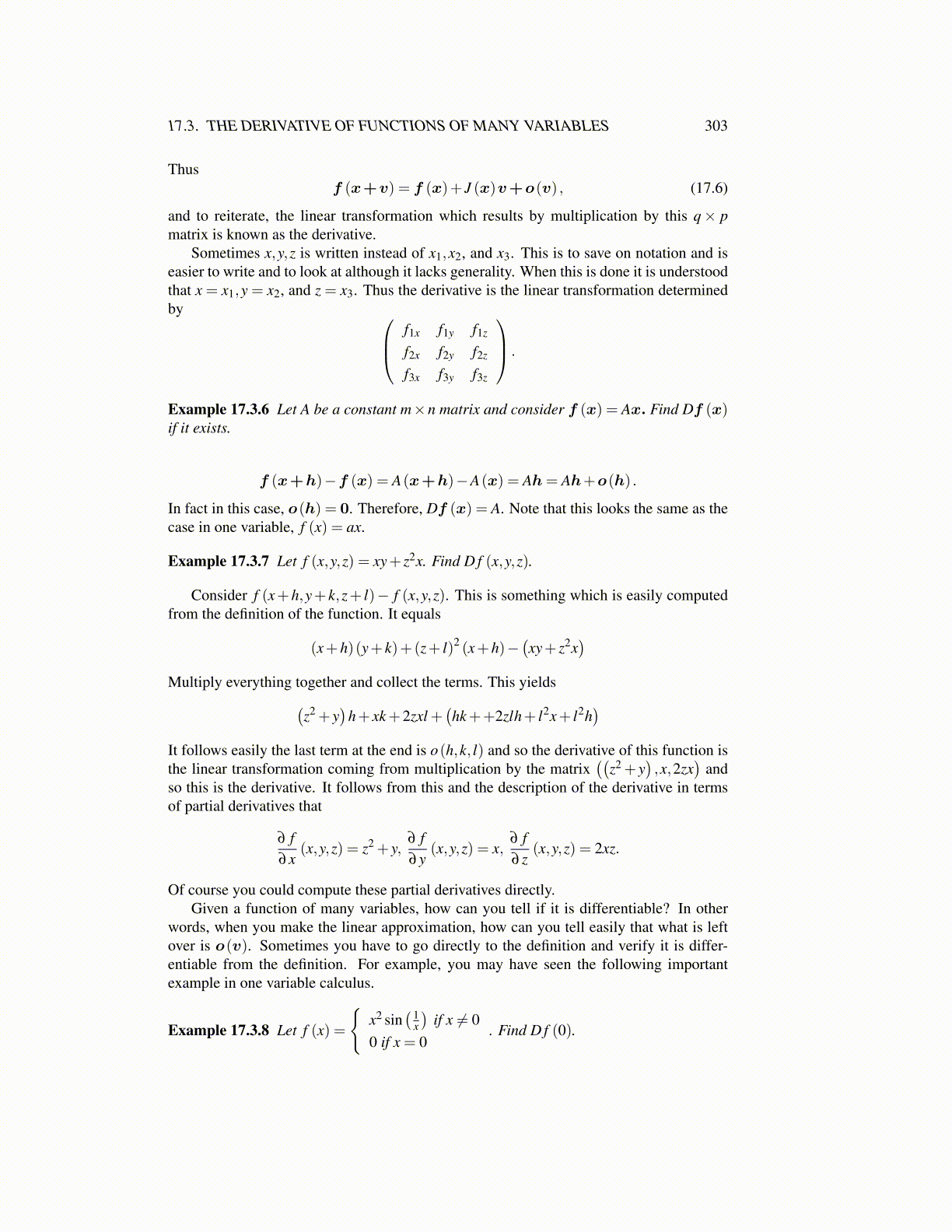
17.3. THE DERIVATIVE OF FUNCTIONS OF MANY VARIABLES 303
Thusf (x+v) = f (x)+ J (x)v+o(v) , (17.6)
and to reiterate, the linear transformation which results by multiplication by this q× pmatrix is known as the derivative.
Sometimes x,y,z is written instead of x1,x2, and x3. This is to save on notation and iseasier to write and to look at although it lacks generality. When this is done it is understoodthat x = x1,y = x2, and z = x3. Thus the derivative is the linear transformation determinedby f1x f1y f1z
f2x f2y f2z
f3x f3y f3z
.
Example 17.3.6 Let A be a constant m×n matrix and consider f (x) = Ax. Find Df (x)if it exists.
f (x+h)−f (x) = A(x+h)−A(x) = Ah= Ah+o(h) .
In fact in this case, o(h) = 0. Therefore, Df (x) = A. Note that this looks the same as thecase in one variable, f (x) = ax.
Example 17.3.7 Let f (x,y,z) = xy+ z2x. Find D f (x,y,z).
Consider f (x+h,y+ k,z+ l)− f (x,y,z). This is something which is easily computedfrom the definition of the function. It equals
(x+h)(y+ k)+(z+ l)2 (x+h)−(xy+ z2x
)Multiply everything together and collect the terms. This yields(
z2 + y)
h+ xk+2zxl +(hk++2zlh+ l2x+ l2h
)It follows easily the last term at the end is o(h,k, l) and so the derivative of this function isthe linear transformation coming from multiplication by the matrix
((z2 + y
),x,2zx
)and
so this is the derivative. It follows from this and the description of the derivative in termsof partial derivatives that
∂ f∂x
(x,y,z) = z2 + y,∂ f∂y
(x,y,z) = x,∂ f∂ z
(x,y,z) = 2xz.
Of course you could compute these partial derivatives directly.Given a function of many variables, how can you tell if it is differentiable? In other
words, when you make the linear approximation, how can you tell easily that what is leftover is o(v). Sometimes you have to go directly to the definition and verify it is differ-entiable from the definition. For example, you may have seen the following importantexample in one variable calculus.
Example 17.3.8 Let f (x) =
{x2 sin
( 1x
)if x ̸= 0
0 if x = 0. Find D f (0).